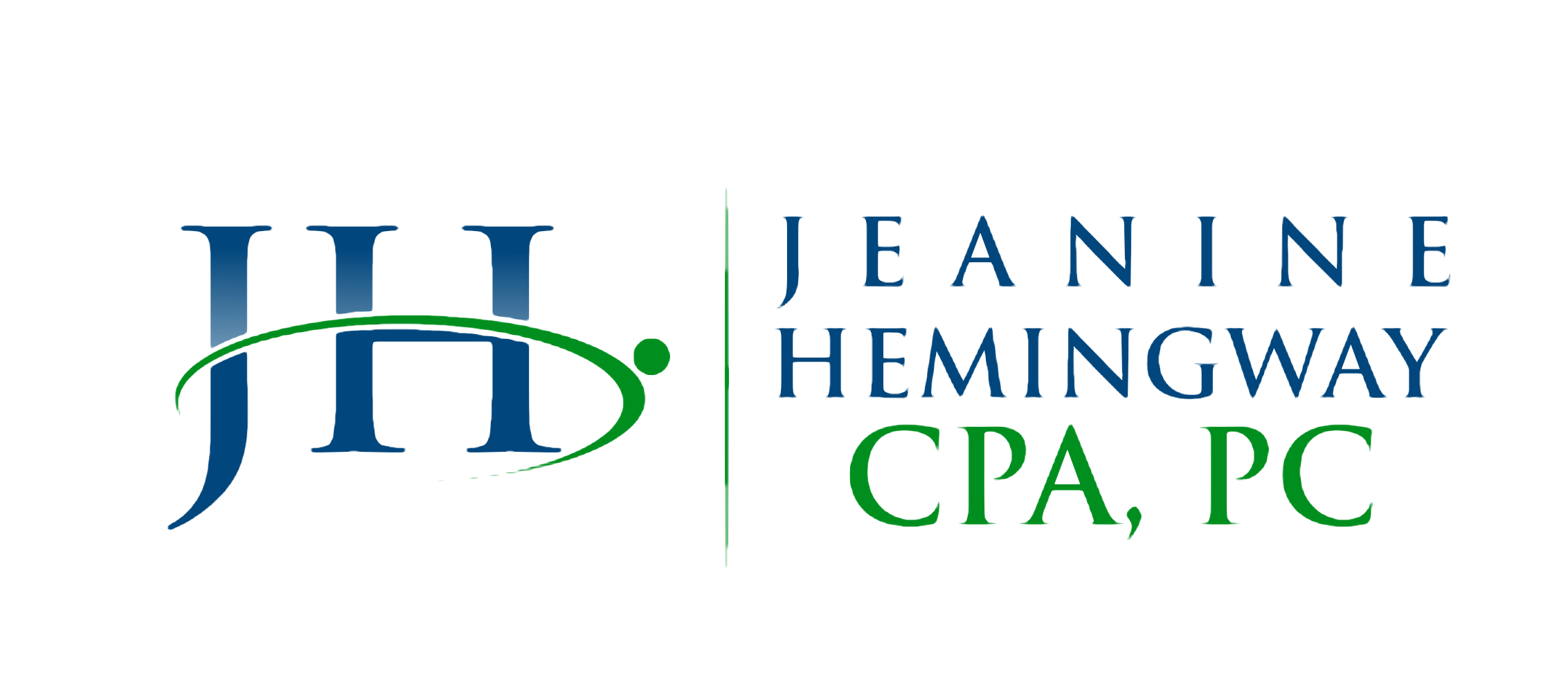For most business owners, once September rolls around thoughts turn away from summer vacations to the reality of tax deadlines and IRS requirements. One deadline just weeks away is September 15th, the due date of the prior three months of estimated taxes.
At Jeanine Hemingway, CPA, we receive many inquiries about estimated taxes, what they are, why they are important, and who should be concerned. This article will shed some light on your top questions and help you get organized for upcoming payment due dates.
What Are Estimated Taxes?
Taxes must be paid as you earn or receive income during the year, either through withholding or estimated tax payments. If the amount of income tax withheld from your salary or pension is not enough, or if you receive income such as interest, dividends, alimony, self-employment income, capital gains, prizes and awards, you may have to make estimated tax payments.
According to IRS guidelines, you must make estimated quarterly payments if:
- You’re a sole proprietor, partner, or S-corporation shareholder, and you expect to owe at least $1000 (after subtracting deductions) when you file your return; or
- You have other income streams such as interest, dividends and/or capital gains that would increase your tax liability by at least $500.
Specifics for W-2 Employees
If you work for a corporation or employer, you probably haven’t thought about estimated taxes. Employees pay federal and state taxes through withholdings on each paycheck. Most employees won’t have to worry about estimated tax payments unless they have a significant income event with no tax withheld.
Specifics for Small Business Owners
If you are in business for yourself, you generally need to make estimated tax payments. Estimated tax is used to pay not only income tax, but other taxes such as self-employment tax and alternative minimum tax. The IRS understands it is a burden to calculate your taxable income (revenue less expenses) and pay the taxes due each month. To help business owners be more organized and prepared, your tax payments are spread into four payments throughout the year:
- January 1 to March 31, due April 15
- April 1 to May 31, due June 15
- June 1 to August 31, due September 15
- September 1 to December 31, due January 15 of the following year.
Estimated taxes include income taxes on the predicted profit of your business plus self-employment taxes. If you have a sole proprietorship or a partnership, you will pay self-employment taxes on your profit.
Self-employment taxes include contributions to the Social Security and Medicare programs, similar to the payroll taxes employees must pay. Since business owners that pay self-employment taxes are considered as both the “employer” and the “employee” they pay both shares of Social Security and Medicare.
What About Corporations?
If you have a C-Corporation or an S-Corporation, you are paid as an employee and are not subject to self-employment taxes. However, Corporation owners still need to consider both their taxes withheld from their W2 wages plus their income from their business in determining their overall tax liability (amount owed) to the IRS.
8 Steps to Calculating Your Estimated Tax
To calculate how much to pay quarterly, you’ll need a reasonable estimate of the income and deductions you’ll report on your federal tax return.
- Use the correct forms first. Individuals, including sole proprietors, partners, and S corporation shareholders, generally use Form 1040-ES, to figure estimated tax.
- To calculate your estimated tax, you calculate your expected adjusted gross income, taxable income, taxes, deductions, and credits for the year.
- When figuring your estimated tax for the current year, it may be helpful to use your income, deductions, and credits for the prior year as a starting point. Use your prior year’s federal tax return as a guide. To help the IRS provides this worksheet –> Form 1040-ES to figure your estimated tax. (1 Irs.gov)
- Next, estimate the amount of income you expect to earn for the year. If you estimated your earnings too high, simply complete another Form 1040-ES worksheet to refigure your estimated tax for the next quarter. If you estimated your earnings too low, again complete another Form 1040-ES worksheet to recalculate your estimated tax for the next quarter.
- Once you have your expected adjusted gross income calculated, run that number through the appropriate tax rate schedule. This will give you your owed tax. Then divide your owed tax by four to find what you owe for each quarter. When you’re calculating what you owe each quarter, keep in mind that you need to pay 25 percent of the total that you expect to owe in a year, instead of estimating what you’ll owe in each quarter.
- Be sure to estimate your income as accurately as you can to avoid penalties. You must make adjustments both for changes in your own situation and for recent changes in the tax law. Corporations generally use Form 1120-W, to figure estimated tax.
- Pay on time. As noted above, for estimated tax purposes, the year is divided into four payment periods. You may send estimated tax payments with Form 1040-ES by mail, or you can pay online. Visit IRS.gov/payments to view all the options. (2 IRS.gov.)
Another helpful resource is to register for the Electronic Federal Tax Payment System (EFTPS), which gives you the option of viewing your payment history. (3 score.org.) - In addition to paying your estimated taxes; you’ll need to file your annual tax return to reconcile what you paid with what you earned. Doing so may provide a happy surprise that you’ve over-paid—in which case you’re eligible for a refund.
Your Next Step
Estimating taxes can seem complex, but these steps are certain to point you in the right direction. If you should have more questions, or wish to schedule an exploratory call, contact us today.
